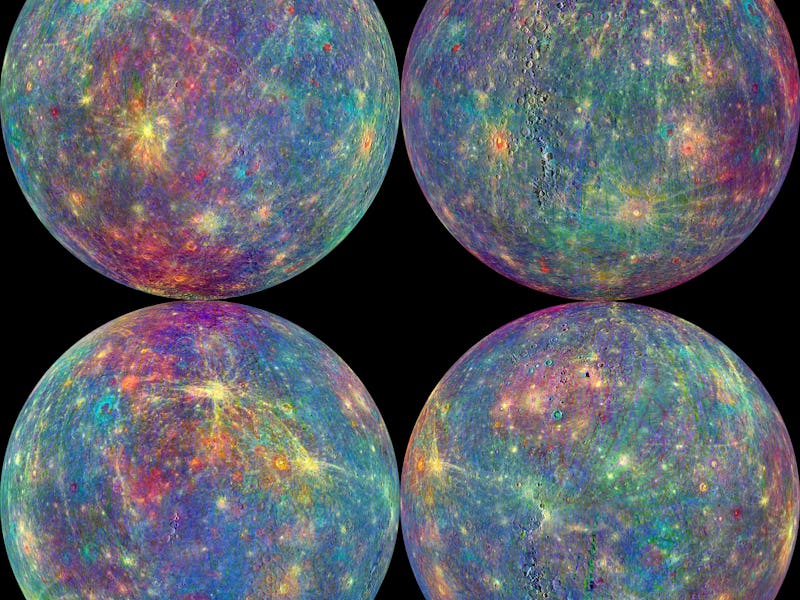You need to see this mysterious planet shine bright in October
Mercury will be at its greatest western elongation on October 25.

The mysterious Mercury will briefly reveal itself to our view from Earth in the month of October — but it will be most visible at one of the most unexpected times of the night.
As the closest planet to the Sun, Mercury is often cloaked by the sheer brightness of the star, blocking it from the view of sky gazers. But for a brief cosmic moment in October, this hot little planet will be as visible in our skies as it ever will be: The point of greatest western elongation from the Sun.
That means it will be at its furthest position away from our shared host star — and in turn, at its greatest point of visibility to us Earthlings. But the opportunities to spot Mercury in October don’t end there.
When to see Mercury in October
Some planets are near-constant fixtures in our night sky. Venus, the second-closest planet to the Sun, is not only the brightest orb in the night sky aside from the Moon, but also is visible in the evenings from April to December, for example. Jupiter, too, is a regular visitor, appearing during the night as (usually) the third brightest orb aside from the Moon and Venus.
A sighting of the closest planet to the Sun is a rarer occurrence — Mercury’s proximity to the star and its small size means that the light from the Sun generally obliterates all view of the little planet.
A close-up view of Mercury, with craters with evidence of water ice picked out in yellow.
That’s why the moment of greatest western elongation, and the weeks and days on either side of it, offer a special opportunity for stargazers and planet enthusiasts to step out and look upward.
But take care when you go stargazing: Mercury is so close to the Sun that the best time to see it is not in the evening or middle of the night, but the early dawn. Sky gazers can expect to see Mercury shine in the early morning skies from mid to late October. The best time to look is an hour before sunrise, toward the east.
When is Mercury at greatest elongation in 2021
While the planet will be visible through the latter half of October, the best time to try and spot the elusive planet is at the moment of greatest western elongation, when it is at its furthest distance from the Sun.
The planet reaches the moment of greatest western elongation on October 25, 2021, right before sunrise at around 6 a.m. Eastern. Mercury rises an hour before the Sun, so set your alarms early to see the planet.
Mercury will continue to be visible in the sky during the early morning hours until early November 2021.
The planet Mercury may be the smallest in the Solar System, but it is the fastest planet to orbit the Sun.
What does Mercury at greatest elongation mean?
Mercury is the planet that orbits closest to the Sun, which is why it is the most difficult planet to spot from our view on Earth due to the light from the star.
As the closest and smallest planet in the Solar System, Mercury only takes about 88 days to orbit the Sun — while Earth takes about 365 days.
As both planets orbit the star, Mercury swings from the east to the west of the Sun as observed from our view on Earth. This takes place three times a year, and the greatest elongation of the planet takes place twenty-two days before and after Mercury and Earth are on the same side of the Sun.
When it swings to the east, Mercury rises and sets a short time after the Sun and can be seen in the early evening twilight. But when it swings to the west of the Sun, the planet rises and sets a short time before the Sun and is therefore visible shortly before sunrise.
On October 24, Mercury will reach the greatest elongation to the west at 18.4 degrees west of the Sun, according to EarthSky.
The least angular distance between Mercury and the Sun is 18 degrees, so this western elongation will not be the brightest.
Mercury was at its maximum elongation on March 6 when it reached a whopping 27.3 degrees west of the Sun.
How to see Mercury at greatest elongation in 2021
The planet will be most visible in the sky shortly before sunrise if you look towards the northeastern horizon. The best time to step outside is about one hour before Sun up.
Mercury can be seen with the naked eye looking to the east, but a pair of binoculars might also be handy if you want to catch the planet glimmer in the twilight.
If you live in a crowded city like New York, it is best to get as high up as possible in order to minimize light pollution therefore going on a balcony or rooftop is highly recommended.
You also want to block out any light coming from screens of electronic devices, or flashlights and allow your eyes to get accustomed to the darkness for around 30 minutes before you look up.